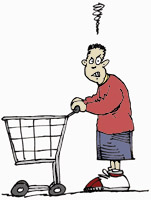How many of us haven’t occasionally gone to a hotel or restaurant and felt cheated because the service didn’t meet our expectations or because the company made unrealistic promises? We all have been unhappy consumers at one time or another and have had different reactions.
The consequences can be negative for the service provider. An unsatisfied customer may abandon his or her relationship with, or speak negatively about, the service provider. The service provider’s next steps are vital, and can determine a consumer’s behavior in the future. A customer’s decision to abandon a relationship often relates not to the failure itself, but to the company’s inadequate response.
Yet not every unsatisfied customer communicates his or her feelings to the company. Some choose silence, making it impossible for the company to win back the customer’s trust, perhaps through discounts or apologies.
Consumers’ negative emotions are the subject of a recent study by researchers at the University of Valencia in Spain. “Consequences of consumer dissatisfaction: A study of hotel and restaurant services” was published in Universia-Business Review. Authors Enrique Bigné, Rafael Currás-Pérez and Isabel Sánchez Garcia begin with the supposition that these negative emotions have specific characteristics that determine how consumers react. They believe that understanding how these patterns of behavior reflect a predominant emotion — in this case, anger versus remorse — would be valuable for managers who want to restore service.
Anger versus Remorse
The authors chose anger and remorse because “those are the two emotions that usually come to the fore when the consumer experiences dissatisfaction.” The nature of these emotions, they explain, is very different. Anger involves the perception of a high level of responsibility and control that other people have over negative events. “These kinds of consumers feel that if they are exploited, they can experience feelings of violence, and focus on the unjust nature of the situation,” the researchers say.
Remorse is felt when people realize or imagine that they would have been better off if they had made another decision. For example, a tourist could feel remorse if he decided not to pay more for a room with a better view and later realizes that the extra charge would have been worthwhile. The typical response to remorse is for people to blame themselves and to have a strong desire to change the situation. While “angry people blame someone else — the company or one of its employees — for what has happened, remorseful people blame themselves for the unsatisfactory experience,” the authors say.
The contrasting nature of these emotions is reflected in the ways that customers complain about negative experiences and react to companies’ strategies to restore their trust. The authors studied hotels and restaurants because they involve “a high degree of pleasure, and one would expect that emotions would be heightened whenever consumers react to a negative experience.”
The researchers spoke to consumers in Spain who were at least 18 years old and who had had an unsatisfactory experience in the tourism sector in 2008. The researchers ultimately collected 660 valid responses and divided the participants according to the predominance of one emotion or the other.
Appearances Can Deceive
The responses demonstrated clearly that so-called "angry" consumers tend to complain more to the company verbally or formally, by filling out claim forms, asking for refunds, contacting consumer groups and undertaking legal action. “This outcome makes sense because angry people believe that the company is the cause of their undesirable condition, and that the company is the unjust party in this situation. They feel as if they are overwhelmed by their emotions, and that leads to a greater tendency to use their complaint as an escape valve for alleviating all the tension accumulated during the experience.”
Such a customer is likely to create situations that are more delicate for the company and its employees than customers who feel remorse. However, angry customers provide valuable information, giving companies an opportunity to rectify the problem and prevent recurrences.
The remorseful consumer, on the other hand, considers himself partially responsible for the service failure and empathizes more with the company’s employees. Such a consumer behaves more calmly and is more conciliatory about an unsatisfactory situation. Nevertheless, the authors warn that the apparent positive attitude presents a genuine danger for the company because such customers “do not complain and do not communicate their lack of satisfaction; they just fail to come back and they talk badly about the company.” As a result, the remorseful customer, unlike the angry one, “can pass unnoticed by the company, being equally dangerous in terms of negative behavior,” which complicates efforts to apply strategies for restoring confidence. In this sense, the authors say, “angry people are more transparent and easier to detect than remorseful ones, and the company can carry out compensation strategies more rapidly.”
Actions Speak Clearly
The authors recommend that managers make amends with dissatisfied customers. Companies should make every effort to reduce the likelihood that customers become angry or remorseful, not only through initiatives to improve service quality, but also by drawing up detailed maps for achieving that goal (known as “blueprinting”). They write, “It is also fundamental to develop strategies of segmentation and positioning that match the competitive advantages of the organization; companies must also communicate their positions in a clear way, promising people only those things that they really can fulfill.”
If consumers could compare a company’s services with those of its competitors, companies “could reduce the number of remorseful people by helping them make choices that are more satisfying.” For example, “a hotel that targets mainly families should not try to sell itself also to couples, since couples are usually looking for peace and quiet, and that is something harder to achieve whenever children are around. If the hotel emphasizes that it is for families that have children — without trying to emphasize that it is also suitable for couples — it will reduce the number of remorseful customers and, as a result, reduce negative behavioral consequences.” Because hotels need to offer impeccable service, “they cannot simultaneously satisfy every segment.”
The quality of every aspect of a customer’s experience needs to be planned appropriately. The authors recommend “actively listening to customers.” Service providers should offer advice as well as consider the customer’s needs, and not just attempt to sell the product. The authors cite the need for waiters to intervene so customers don’t order too much or too many kinds of food, which could lead to their having misgivings about their choices. Because customers often fail to express their lack of satisfaction, employees should ask customers if they are satisfied without being too aggressive about figuring out the answer.
The authors consider it worthwhile to train employees about observing external signals (attitudes, phrases, body language) that “reveal if a particular person is having second thoughts or is angry or has other emotions.” An entire area of psychological research analyzes the anatomical-physiological language of emotions so that other people can associate facial expressions with specific emotions. “Facial expressions such as raising the eyebrows or pinching the lips have been associated with feelings of anger,” the researchers note.
Assuming Total Responsibility
On the other hand, if an employee finds himself with a customer who is angry or has misgivings, he should try to restore trust. If someone has experienced remorse, the employee “should direct his efforts at reducing the feelings of guilt and responsibility that go along with the misgivings; for example, by making an apology and assuming total responsibility for the unsatisfactory result; recalling the differences from other alternatives in the market (minimizing the attractiveness of the competition); presenting this case as something isolated and infrequent; and offering compensation in the form of discount tickets.”
This should help soften the negative effect of remorse and any feelings that this person might abandon the service provider. Angry customers also have such feelings, but people who have misgivings are more aware of the existence of marketplace alternatives. “When he made his decision, this sort of consumer was better informed than the angry customer was” when he made his decision, the authors say. “The angry customer often has no other alternatives in mind, or simply doesn’t know that those other alternatives are more appealing than the one he chose in the first place.”
The authors suggest that managers carry out similar measures to restore service when the predominant emotion is anger. That’s because their research did not discover any differences between the two types of people when it comes to various service-restoration strategies. With both types of people, they write, “offering an apology and explaining the reasons for their dissatisfaction, and then saying what your company is going to do to resolve the problem, can be more effective approaches to softening negative emotions than offering people a discount or another sort of economic compensation.”
Companies should never provide silence instead of an explanation of an unsatisfactory customer experience. After all, their response determines whether they lose those customers and whether the customers spread negative word of mouth about their experiences.
Ultimately, managers should try to derive the greatest advantage from the experience, even if it has not met the customer’s expectations. They should try to use feedback in a process of continuous learning that enables them to prevent such situations from recurring. The authors suggest that managers establish a bi-directional, fluid system of communication — from the personnel who contact the customer to management and then in reverse — to enable the company to maximize the learning effect.



